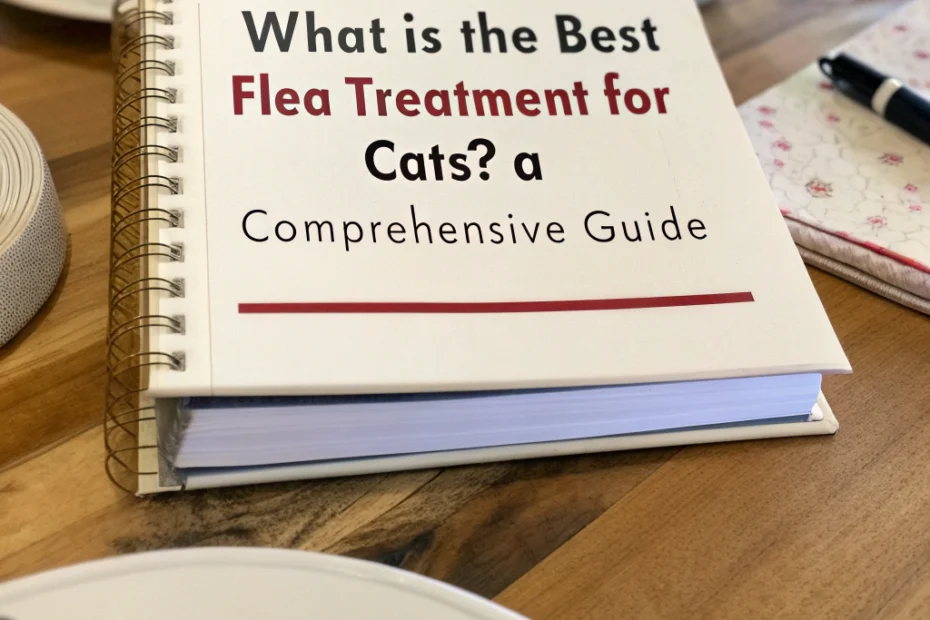At-a-Glance
When it comes to keeping your feline friend free from fleas, understanding what is the best flea treatment for cats is crucial. Fleas are not just an annoyance; they can lead to more serious health issues if left untreated. This guide will walk you through the essentials of choosing a flea treatment, ensuring safety, and understanding the alternatives available. By the end, you’ll be better prepared to make informed decisions for your cat’s health and well-being.
How to Choose
Choosing the right flea treatment for your cat involves several considerations. First, assess your cat’s lifestyle. Indoor cats may have different needs compared to outdoor cats. Next, consider your cat’s age and weight, as treatments vary for kittens, adults, and senior cats. It’s also important to evaluate your cat’s health conditions. Some treatments may not be suitable for cats with certain health issues.
Types of Flea Treatments
There are various types of flea treatments available, each with its own benefits and considerations:
- Topical Treatments: These are applied directly to your cat’s skin and are commonly used for their ease of application and effectiveness.
- Oral Medications: These may help in quickly eliminating fleas and are often favored for their convenience.
- Collars: Flea collars can provide long-lasting protection and are easy to use.
- Shampoos: Flea shampoos can support immediate relief from fleas but may require frequent application.
Always consult your veterinarian to determine the most suitable option for your cat.
Safety & Setup
Ensuring the safety of your cat during flea treatment is paramount. Before applying any treatment, read the instructions carefully. Use products specifically designed for cats, as some dog treatments can be harmful to felines.
Application Tips
When applying topical treatments, part your cat’s fur and apply the product directly to the skin. Ensure that your cat does not lick the area until it is dry. For oral medications, follow the dosage instructions provided by your veterinarian.
Monitoring and Adjustments
After administering the treatment, monitor your cat for any adverse reactions. If you notice any unusual behavior or symptoms, contact your veterinarian immediately. Adjustments may be necessary based on your cat’s response to the treatment.
Core Pillars
Effective flea control relies on three core pillars: prevention, treatment, and maintenance. Prevention involves regular checks and using preventative products. Treatment focuses on eliminating existing fleas, while maintenance ensures that your cat remains flea-free through regular grooming and cleaning of their environment.
Prevention Strategies
Regularly vacuum your home and wash your cat’s bedding to reduce flea infestations. Consider using flea preventatives year-round, especially if your cat spends time outdoors.
Placement & Environment Tips
Creating a flea-free environment is essential for your cat’s health. Keep your home clean and tidy, focusing on areas where your cat spends the most time. Use flea sprays or powders on carpets and furniture if necessary.
Outdoor Considerations
If your cat ventures outside, maintain your yard by trimming grass and removing debris where fleas might thrive. Consider limiting your cat’s outdoor time during peak flea seasons.
Comparison with Alternatives
While traditional flea treatments are effective, some cat owners explore alternative methods. Natural remedies, such as essential oils, are sometimes considered, but their effectiveness varies. Always consult with a veterinarian before trying alternative treatments to ensure they are safe for your cat.
Pros and Cons
- Traditional Treatments: Proven effectiveness but may have side effects.
- Natural Remedies: Fewer chemicals but may not be as reliable.
FAQs
Q: How often should I treat my cat for fleas?
A: The frequency depends on the product used. Some treatments are monthly, while others may last longer. Follow the product instructions and consult your veterinarian.
Q: Can indoor cats get fleas?
A: Yes, indoor cats can still get fleas, especially if other pets or humans bring them inside. Regular prevention is important.
What to Do Next
Now that you have a better understanding of what is the best flea treatment for cats, consider your cat’s specific needs and consult your veterinarian for personalized advice. Regularly monitor your cat’s health and adjust treatments as necessary to ensure their comfort and well-being.
Disclaimer: Always consult your veterinarian for personalized advice regarding your cat’s health.
